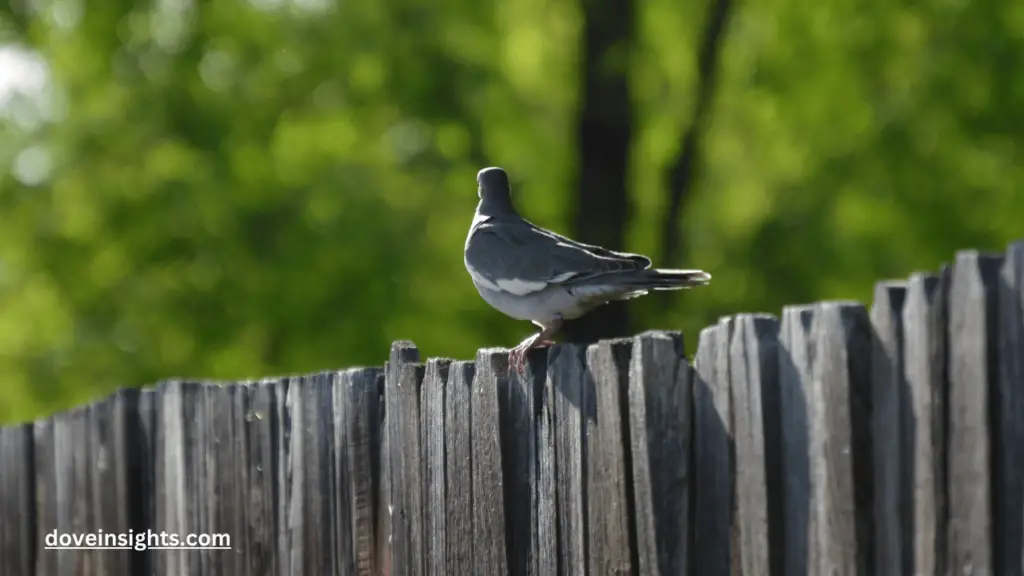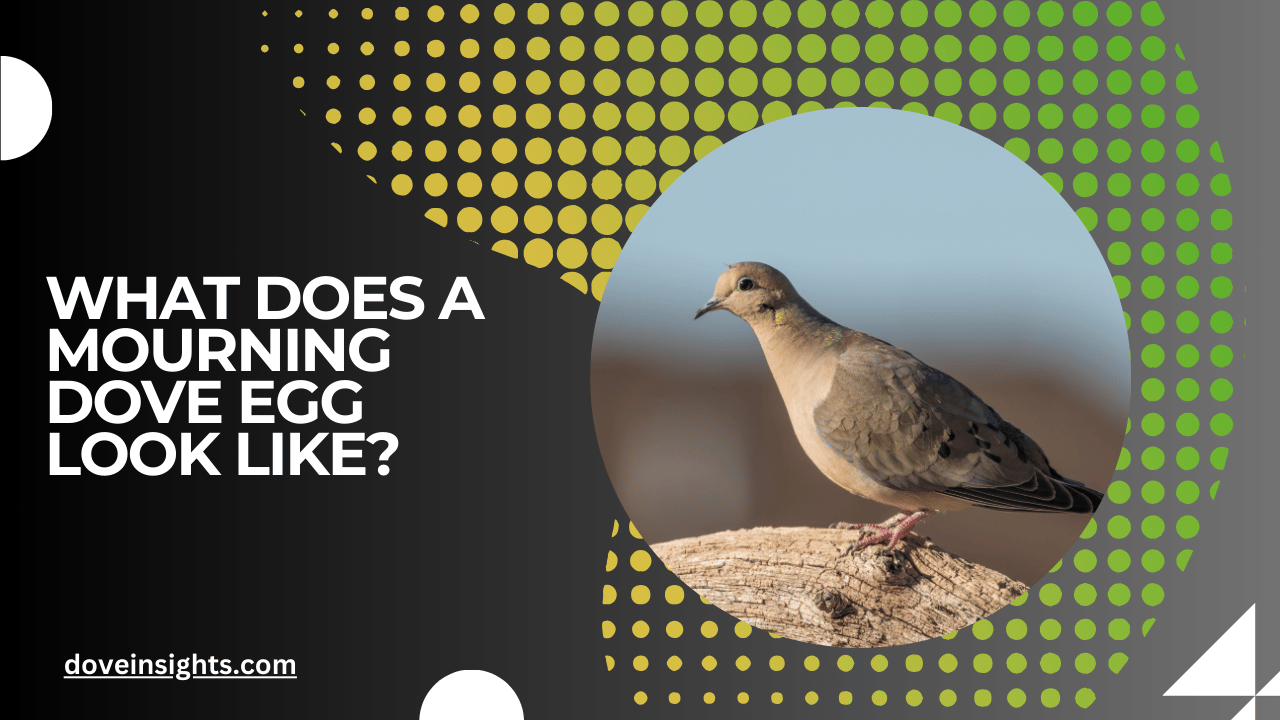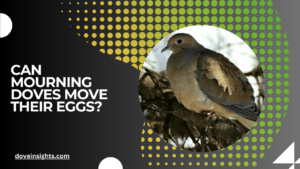When we think of mourning doves, we often picture their serene cooing and graceful flight across the skies.
But there is an intriguing aspect of their life cycle that remains hidden from the casual observer: their eggs. Unlike the vivid and easily identifiable eggs of some other birds, the eggs of mourning doves are often overlooked, yet they are a fascinating and important part of this species’ reproduction.
These delicate, unassuming eggs play a crucial role in ensuring the survival of mourning doves, and understanding their appearance offers a deeper insight into their biology and the bird’s natural behavior.
The mourning dove egg may not stand out in the way that a robin’s or a sparrow’s egg does, but its unique characteristics tell a story of survival, adaptation, and the complex processes of the bird’s reproductive cycle.
This article will explore the fascinating details of what a mourning dove egg looks like, why its appearance is significant, and what it tells us about the bird’s nesting and parenting habits.
By the end, you’ll gain a new appreciation for this often-overlooked aspect of the mourning dove’s life.
From its color and texture to its role in the dove’s nurturing process, the mourning dove’s egg is not just a symbol of new life, but a key to understanding how this beautiful bird thrives.
Whether you are an avid birdwatcher, a nature enthusiast, or simply curious about the natural world, this deep dive into the mourning dove egg will reveal the beauty and importance of this small but significant part of their life cycle.
Contents
- 1 The General Appearance of Mourning Dove Eggs
- 2 The Color and Pattern of Mourning Dove Eggs
- 3 The Incubation Process and Care of Mourning Dove Eggs
- 4 Mourning Dove Eggshells and the Hatching Process
- 5 The Significance of Mourning Dove Eggs in Birdwatching and Conservation
- 6 Conclusion:
- 7 FAQ’s
- 7.0.1 What color are mourning dove eggs?
- 7.0.2 How big are mourning dove eggs?
- 7.0.3 How long does it take for mourning dove eggs to hatch?
- 7.0.4 Do mourning doves lay more than one egg?
- 7.0.5 What do mourning dove eggs look like when they hatch?
- 7.0.6 What is the incubation process like for mourning doves?
The General Appearance of Mourning Dove Eggs
Mourning dove eggs are small, smooth, and somewhat oval-shaped. Typically, they are about 1 inch in length and about 0.8 inches in width, making them compact and well-suited to the dove’s nesting habits.
Unlike the more vibrant eggs seen in other species, mourning dove eggs are usually a matte white or pale gray in color, sometimes with subtle brown speckles scattered across the surface.
These markings are not particularly bold or dramatic but serve as a natural camouflage, helping the eggs blend into the surrounding environment of twigs and leaves in the nest.
The shape and size of the eggs are important in the context of the mourning dove’s nesting behavior. Because mourning doves typically build simple, open nests in trees or on ledges, their eggs need to be small and secure enough to withstand occasional movements of the nest.
The smooth, rounded shape of the egg ensures it stays in place while the parent doves incubate, preventing it from rolling out of the nest.
Mourning dove eggs are usually laid in pairs, with the female typically laying two eggs at a time. Both parents take turns incubating the eggs, providing warmth and protection.
The eggs themselves are fragile, and the doves’ parenting instincts ensure that the eggs are never left unattended for long, providing a safe environment for the developing embryos.
The Color and Pattern of Mourning Dove Eggs
One of the most distinctive features of mourning dove eggs is their color, which ranges from a pale cream to a more light grayish-white hue. While many bird species lay brightly colored or patterned eggs, mourning dove eggs are relatively understated.
The soft, neutral tones help camouflage the eggs, making them less noticeable to predators.
In addition to their base color, mourning dove eggs often have small speckles scattered across the surface. These specks can be brown, gray, or even slightly greenish in color. The speckled pattern is irregular and can vary from egg to egg.
This natural variation in color and pattern plays a key role in hiding the eggs from potential threats, such as snakes, squirrels, and crows, which might otherwise discover and destroy them.
The speckling also serves a functional purpose. It can help to mimic the textures and colors found in the environment around the nest, such as tree bark, leaves, and dirt, making the eggs harder to detect.
This form of protective coloration is a survival mechanism that helps mourning dove eggs stay hidden from predators during the vulnerable incubation period.
The Incubation Process and Care of Mourning Dove Eggs
Once the mourning dove eggs are laid, they are carefully incubated by both the male and female doves. The female typically lays her eggs in the early morning or late afternoon, and once the eggs are in the nest, the parents take turns incubating them.
The male typically incubates during the day, while the female takes over during the night. This constant rotation ensures the eggs are kept at the optimal temperature for development.
The incubation period for mourning dove eggs lasts for approximately 14 to 15 days. During this time, the parent doves will keep the eggs warm, safe, and protected.
They will also use their bodies to shield the eggs from harsh weather conditions. This commitment to protecting their young is a testament to the devoted nature of mourning doves as parents.
Interestingly, mourning doves do not use a deep, lined nest like some other bird species.
Instead, their nests are typically shallow and made from a loose collection of twigs and grasses. The eggs rest in a simple, secure spot, with the surrounding twigs helping to support and stabilize the eggs while the doves incubate them.
Mourning Dove Eggshells and the Hatching Process
Mourning dove eggs have a relatively thin eggshell, which is typical for many pigeon-like species. This delicate shell is composed of calcium carbonate, which provides enough strength to protect the developing chick while still allowing it to break open during hatching.
The eggshell is brittle, which means that it can be easily cracked by the chick as it begins to emerge. This is an important part of the hatching process, as the chick’s beak, known as the egg tooth, helps it crack open the shell to emerge into the world.
The process of hatching typically occurs around 14 to 15 days after the eggs have been laid. The parents will continue to incubate the eggs during this period, with the temperature of the eggs being carefully regulated.
When the chick is ready to hatch, it will use its egg tooth to peck at the shell, eventually creating a small crack. Over the next few hours, the chick will work its way out of the shell, emerging as a tiny, helpless bird.
Once the chick hatches, the parents continue to care for it by feeding it a special secretion called pigeon milk (a nutrient-rich substance produced by both parents).
The chicks will remain in the nest for another 2 to 3 weeks before they are ready to leave and begin their independent lives.
The Significance of Mourning Dove Eggs in Birdwatching and Conservation

While mourning doves may not be the first bird species that comes to mind when thinking about bird eggs, they offer important insights into the bird’s reproductive behavior and survival strategies.
For birdwatchers, understanding the appearance and characteristics of mourning dove eggs can enhance the experience of observing these beautiful creatures in the wild.
Knowing when to look for nests, what to expect in terms of egg appearance, and how to identify mourning dove eggs helps bird enthusiasts better appreciate the complexities of dove life cycles.
Moreover, the preservation of mourning doves and their eggs is essential for maintaining ecological balance. Mourning doves play a significant role in controlling seed populations, and their continued survival relies on the protection of their nesting sites and eggs.
Ensuring that these birds have a safe environment in which to breed is crucial for conservation efforts, as habitat destruction and predation can threaten mourning dove populations.
Conclusion:
The mourning dove egg is a symbol of quiet beauty and resilience, holding a vital place in the life cycle of this peaceful bird.
While their eggs may not be as flashy or dramatic as those of other species, they play an essential role in ensuring the continuation of mourning dove populations.
From their delicate color and texture to the devoted care provided by the parents during incubation, mourning dove eggs are a testament to the bird’s commitment to survival and the nurturing process.
By learning more about what a mourning dove egg looks like, we gain a deeper understanding of not only the bird’s life cycle but also the natural world around us. Whether you’re a birdwatcher, a nature lover, or someone curious about the wonders of the animal kingdom, the story of mourning dove eggs is one of subtlety, adaptation, and survival.
As we continue to protect and appreciate these beautiful creatures, let us remember the quiet, powerful significance of their eggs and the new life they bring into the world.
FAQ’s
What color are mourning dove eggs?
Mourning dove eggs are usually pale white, light gray, or off-white with subtle brown or gray speckles scattered across the surface. This color pattern helps the eggs blend into the nest environment, providing camouflage against predators.
How big are mourning dove eggs?
Mourning dove eggs are relatively small, measuring around 1 inch (2.5 cm) in length and about 0.8 inches (2 cm) in width. Their compact size suits the dove’s relatively simple nesting structure.
How long does it take for mourning dove eggs to hatch?
It typically takes 14 to 15 days for mourning dove eggs to hatch. During this time, both parents take turns incubating the eggs, ensuring they stay at the optimal temperature for development.
Do mourning doves lay more than one egg?
Yes, mourning doves generally lay two eggs at a time. Both parents share the responsibility of incubating the eggs and feeding the chicks once they hatch.
What do mourning dove eggs look like when they hatch?
Mourning dove eggshells are thin and brittle, allowing the chick to crack them open using its egg tooth. Once hatched, the chicks are small, blind, and covered in a fine layer of down feathers.
What is the incubation process like for mourning doves?
Both male and female mourning doves take turns incubating the eggs. The incubation period lasts 14 to 15 days, with the parents keeping the eggs warm and safe from predators.








